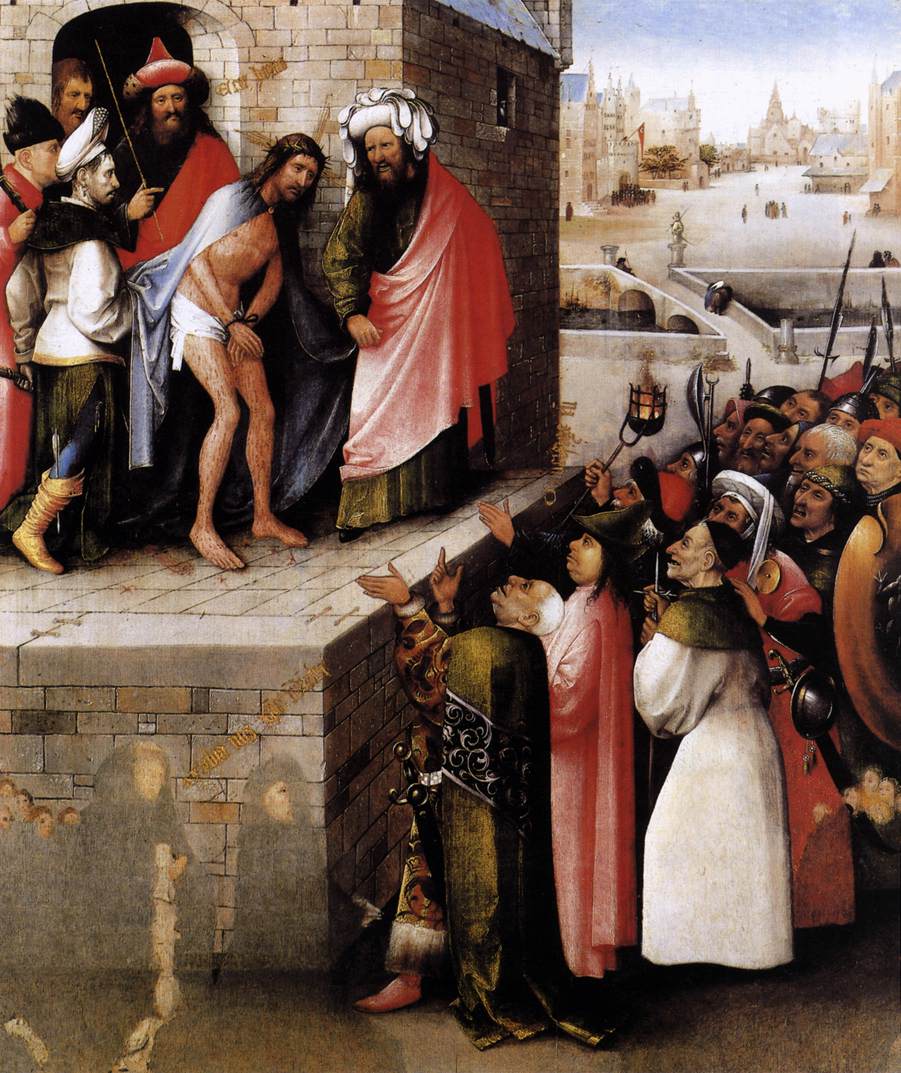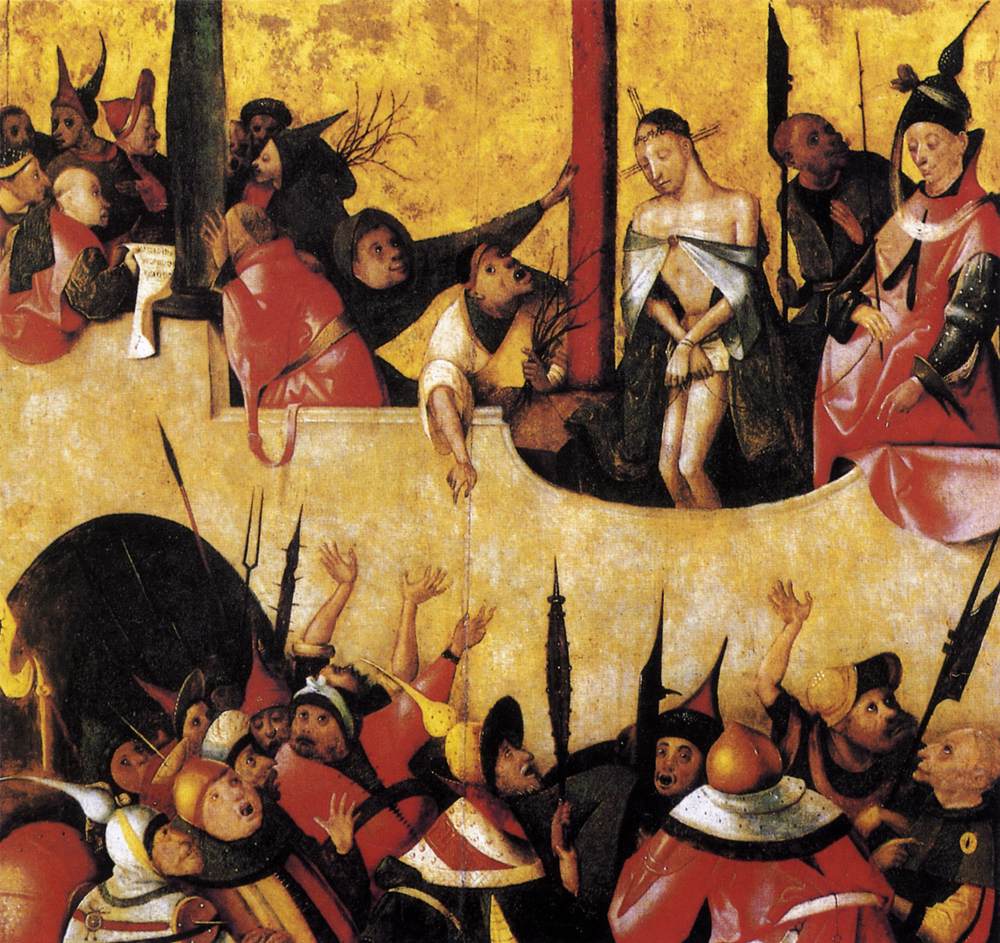Description
Hieronymus Bosch's painting "Ecce Homo" is a masterpiece depicting the biblical scene in which Pilate presents Jesus to the crowd wearing the crown of thorns and purple cloak. This work is interesting in many ways, including its artistic style, composition, and color.
Bosch's artistic style is unique and recognizable. His oil painting technique is detailed and painstaking, allowing him to create a wealth of texture and detail. In addition, his style is characterized by the representation of fantastic and strange beings, which gives his works a mysterious and enigmatic touch.
The composition of "Ecce Homo" is impressive. Bosch manages to create a sense of depth and movement in the scene, thanks to the arrangement of characters and elements. The figure of Jesus is in the center of the work, surrounded by a crowd of people who observe him with gestures of astonishment and contempt. In the upper part of the painting, Pilate and his soldiers can be seen, while in the lower part are the most grotesque and fantastic characters.
Color is another interesting aspect of this painting. Bosch uses a palette of intense and vibrant colors, which contrast with the dark and gloomy tones of the scene. Gold and red colors stand out on Jesus' crown of thorns and purple cloak, while green and blue tones are used to represent nature and heaven.
The history of the painting is also fascinating. "Ecce Homo" was created around 1475-1480, during the period when Bosch was working in his hometown of 's-Hertogenbosch in the Netherlands. The work was commissioned by the Brotherhood of Our Lady, a religious organization that was in charge of the construction and maintenance of chapels and altars in the city.
Lastly, there are some little-known aspects of this painting. For example, Bosch is believed to have used live models to represent the characters in the crowd, allowing him to better capture the expression and emotion of the scene. Furthermore, some experts have speculated that the figure of Jesus in the painting is actually a self-portrait of Bosch, which adds an even more personal and mysterious touch to the work.


